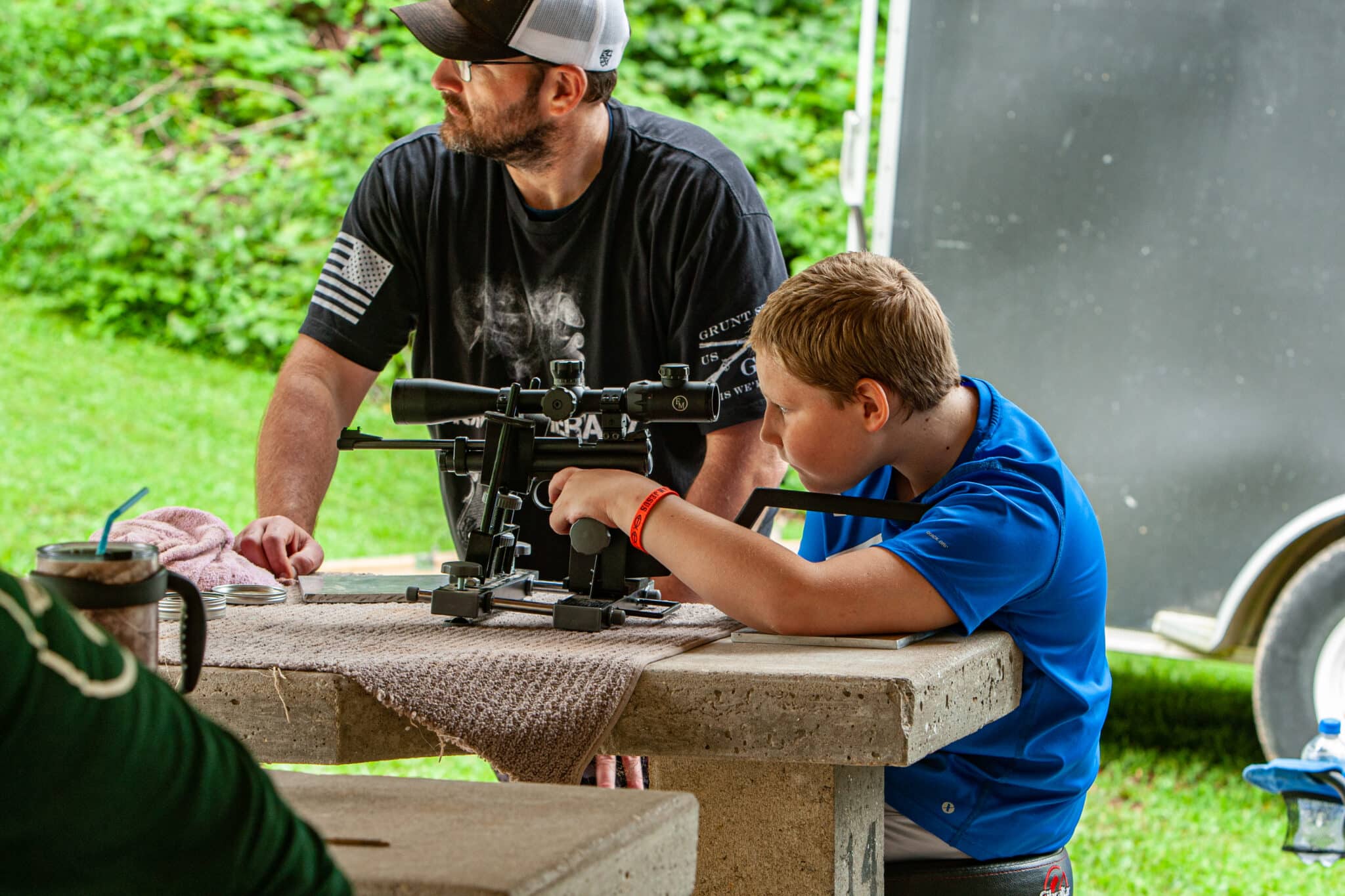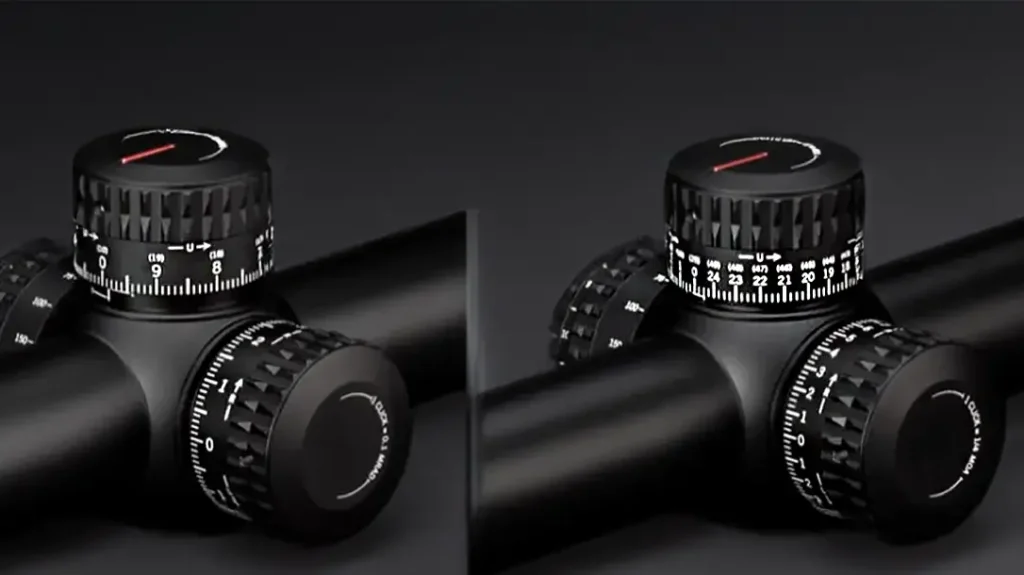Mils vs MOA – The How and Why

How did the Mils vs MOA debate get started? We’ll get there. Before the advent of affordable rangefinders, the range was determined using an instrument of measure, like the reticle in your optic. Given two “knowns,” we can solve for the third (Algebra). The reticle provided one known mathematical scale. Given a known target size, you can then determine the range. Some competitions require its use, and military units still practice it.

Mils vs MOA – Understanding the Difference
Newer reticles can be used for holds (wind and elevation). Instead of dialing, you reference lines in the reticle—milliradians (mil) or minutes of angle (MOA). Good scopes are precise, even if you might not be. Using this method is fast and is becoming popular in the military. Determine range, read the wind, hold in the scope, and press the trigger. It works using this method out to 800 meters.
You can also make impact corrections using the scale in the reticle. Watch the impact holding the reticle in place. If you miss something, identify where in the reticle, move that impact point to the target, and press. There are more esoteric uses, but these are the most common. You are determining the range to target, using it to compensate for bullet drop and/or wind, and follow-up shots.

Metric vs Imperial
Two scales dominate the market: Mils and MOA. What’s the difference? Simple, mils are metric, and minutes of angle (as converted by most) are closer to inches, but not exactly. One mil is, well, one mil. It’s nothing more than a measurement method, like millimeters and meters. One MOA is 1.047 inches at 100 yards. Push that out to 1,000 yards, and 1 MOA is 10.47 inches. It is handy if you measure in yards and think in inches. People accustomed to thinking in inches, yards, and miles might prefer MOA. Still, the rest of the world thinks in millimeters, meters, and kilometers. Both work fine, and each has advantages and disadvantages, depending on the user and use.
Kahles USA provided a K624i scope using a MOAK reticle for comparison. The MOAK is configured at an angle of minutes. Elevation and wind turrets use 0.25-MOA adjustments. Each click moves the bullet impact 0.25 inches at 100 yards. My personal K624i uses an AMR reticle graduated in Milliradians. Turrets are 0.10 mils, so each click measures 0.10 milliradian. Other than some overall upgrades to the new scope, they are identical. Mine sits on my Seekins Precision SP-10 build chambered in 6.5 Creedmoor. The MOAK K624i was mounted to a Primary Weapons MK212 in the same caliber, keeping the comparison close.

Understanding Clicks
Zeroing is critical for most guns and incredibly essential for some. Finding that zero takes effort, and both minutes and mils can be used effectively. Quarter-minute scopes change bullet impact by 0.25 inches with each dial click (wind or elevation). Most mil scopes use 0.10 of a mil, equating to .39 inches at 100 yards. MOA is more precise if you, the rifle and the ammunition always shoot within 0.25 inches. Most accomplished shooters can consistently hold 0.5 inches at 100, so 0.10 mils is fine for most. I was able to get both rifles dead center, shooting sub-half-inch groups with ease.
Most precision shooters use the knobs for elevation and wind adjustments. Mathematically, the MOA dials are more precise. It assumes the scope is precise (which both Kahles scopes were), along with the shooter. All things being equal, each click equals less change as the range increases, meaning an MOA dial allows more precision at range. That equates to more dialing to get that precision. Both rifles have the same elevation correction at 1,000 yards—6.5 mils, or 23.4 MOA. It takes more turning with MOA knobs to get there. The Kahles MOAK has 35 MOA per revolution, more than most. Some will require multiple turns. That is really the only practical difference for most. Mils take fewer turns; MOA gives you enhanced precision with more turns.
For the Most Precision – Use Your Dials
Similarly to the dials, MOA scales are wider, meaning less in your field of view. Using an MOA scale, you will hold higher on the scale (lower in the scope) given the same distance. Mils will be much easier as the range extends, using less scale for elevation and wind. Holds are closer to the vertical center line using mils. You can use an MOA scale for holds, but there is a reason combat reticles are designed for fast elevation, and windage holds use mills. It’s just quicker and easier. Yes, it’s slightly less precise, but if true precision is your need, the reticle is not the best tool. Use the dials.
The United States has been using mils for range measurement for years. Early scopes used mil dots or lines to range with MOA dials. It required a conversion, and Europeans looked at you like you were stubborn Americans. But it works, and many still prefer it. These days, the best choice is matching your knobs and reticle. Pick one, and once chosen, commit to it. Don’t convert them back and forth. Simply put, a mil is a mil, not 0.39 inches—keep it simple. Either think in metric or inches, but avoid using both.

Mils vs MOA -Both Can Be Accurate
Depending on the reticle, both can be used to range with accuracy. The MOA scale is larger, meaning you might be limited to extended ranges. Using MOA allows you to think entirely in yards; for some, that is a huge asset. For most, the mil scale ranges well. Experts can range within 20 yards or less at some astounding distances, but it takes much practice. If using a reticle for ranging at extended ranges (beyond 1,000 yards), you are going to want to use mils. For hunting or more close-range tasks, MOA works just fine.
One of the newest scales is IPHY (Inch Per Hundred Yards). It’s nothing more than just dropping the 0.047 from the MOA equation. Throw it in a calculator, and it’s more precise; it’s just not something most people use. It’s just a simplification of MOA that mimics the metric system. If that’s what you want, use mils—it’s more straightforward and better supported.
Both Kahles scopes use first-focal-plane reticles, meaning the reticle is accurate without regard to magnification. Second-focal-plane reticles are only precise at one power—usually the highest, but not always. Your scope instructions should tell you. With practice, you can use SFP with other powers; you need to use it and determine the differences.
Buy Quality Scopes
Few scopes are truly precise, and those that are cost more. Most are improving, but never assume one click equals what it says on the dial. You must confirm by shooting your rifle and measuring the impacts. Use your reticle to measure known-sized targets to confirm accuracy. Shoot a target at a known distance using the knob, then the reticle. They should be the same. Check at various magnifications on an FFP reticle and at different ranges, as it might change.
Minutes and Mils are science; the application is an art. Both are tools. Use one, and you will gain proficiency. The world is full of instructors who can write a master’s thesis on mils vs MOA but have no clue how to use it. Application is key, and it is not tedious study and mind-numbingly boring class time. Learn how your scale works, then get on the range and use it.
Mils vs MOA – The How and Why
So, what should you pick when it comes to mils vs MOA? Pick one scale, stick to it, and use it. Eliminate conversions and think in one scale. There is no practical reason for conversions today. They only complicate what should be a simple process. We missed the point about whether a scope requires a degree in math to be used properly. It’s supposed to be about getting hits, not headaches. Keep it simple, use what works best for you, and above all, practice, practice!
For more information, visit:https://www.kahles.at/us/




